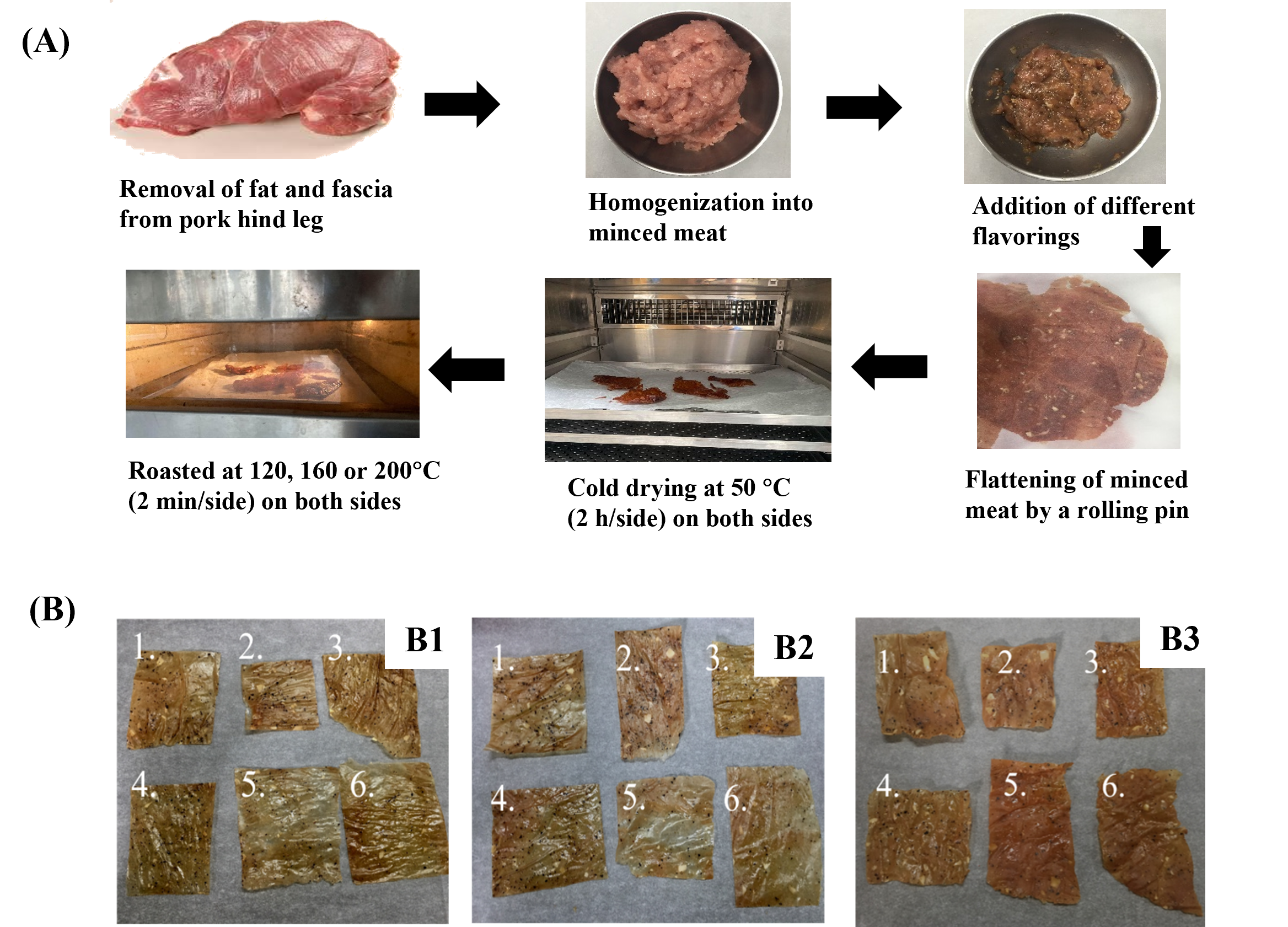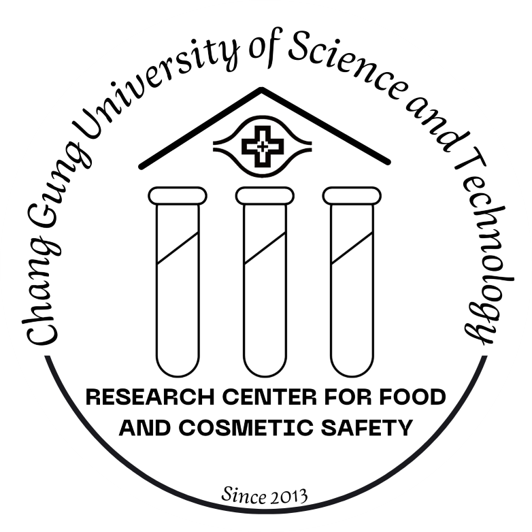Analysis and formation of polycyclic aromatic hydrocarbons and cholesterol oxidation products in thin slices of dried pork during processing

圖文摘要說明
這張圖片呈現了薄片豬肉乾的製作流程與成品,而一項研究便針對此過程,探討不同調味料與烘烤溫度對最終產品中有害物質—「多環芳香烴」(PAHs)與「膽固醇氧化產物」(COPs)—生成的影響。如圖(A)所示,其製備過程包括將豬後腿肉絞碎、添加八種不同調味料、擀平、以50°C乾燥,最後以120、160或200°C的高溫烘烤。圖(B)為不同加工後之成品外觀。
Abstract
This study aims to determine toxic compounds polycyclic aromatic hydrocarbons (PAHs) and cholesterol oxidation products (COPs) in thin slices of dried pork as affected by different flavorings and roasting temperature treatments through employing a QuEChERS method coupled with gas chromatograph-tandem mass spectrometer (GC-MS/MS) and gas chromatograph-mass spectrometer (GC-MS), respectively. By employing this method, high accuracy and precision was attained for freeze-dried pork hind leg sample. Following addition of 8 different flavorings with roasting temperature at 120, 160, and 200$^{\circ}$C, the levels of total COPs and PAHs in thin slices of dried pork followed a temperature-dependent increase during roasting, which was further confirmed by principle component analysis. High level of soy sauce or sugar inhibited COP formation, while the low-level minimized PAH formation in thin slices of dried pork during roasting. Sugar was more effective in inhibiting COP formation while soy sauce was more efficient in reducing PAH formation.
Keywords: Polycyclic aromatic hydrocarbons (PAHs); Cholesterol oxidation products (COPs); Thin slices of dried pork; QuEChERS; GC-MS; GC-MS/MS

